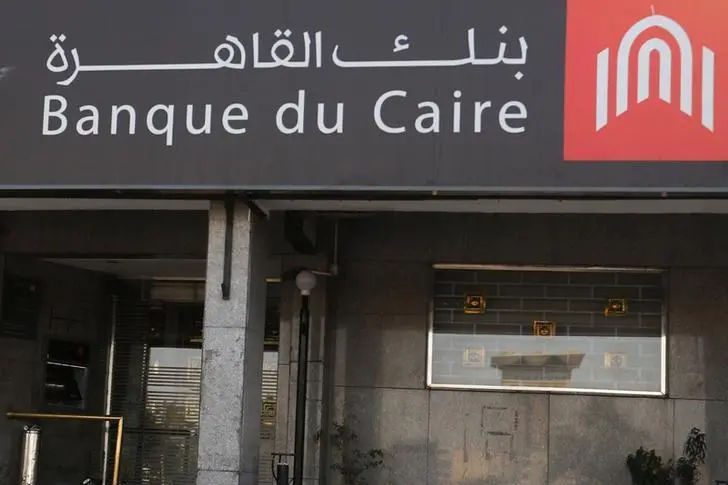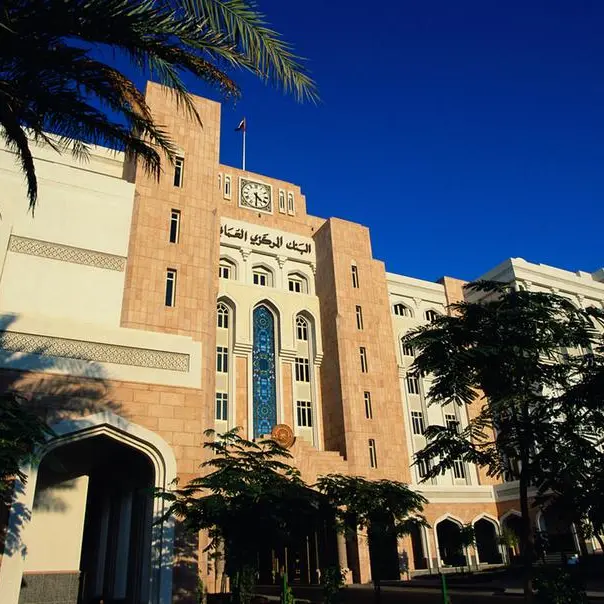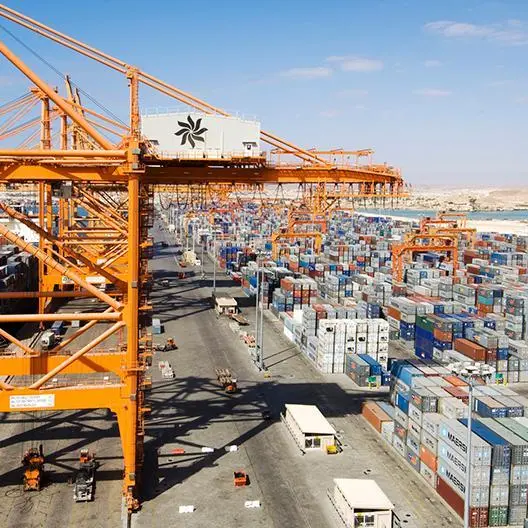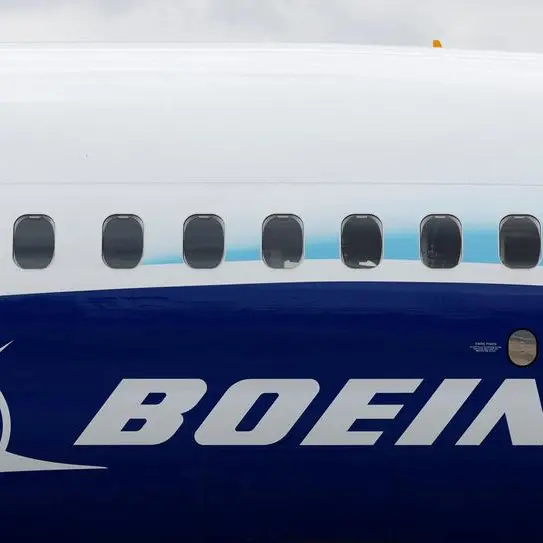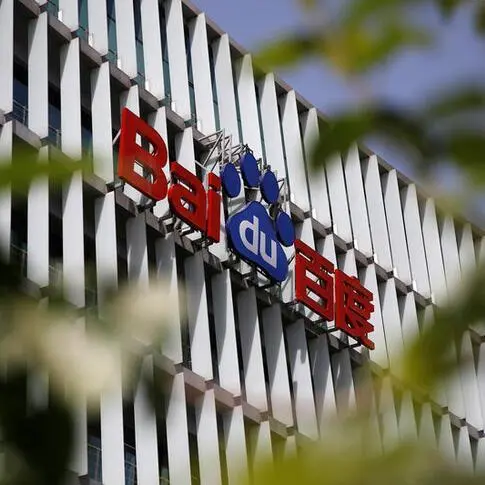PHOTO
Key players such as Banque du Caire have taken strong strides not only in adopting these aspects but to expand their reach, aide startups, and enhance the overall business cycle.
Arab Finance sat with Tarek Fayed, the bank’s chairman, to get his take on the banking sector’s outlook, the rise of financial technology (Fintech), the government’s initiatives, and the banks growth trajectory.
What can you tell our readers about Banque du Caire’s upcoming projects? What areas are you going to focus on during the coming period?
Banque du Caire aims to achieve high growth rates across various sectors, within the framework of its ambitious strategy. Such strategy focuses on strengthening its role in retail banking and financing large and medium-, small-, and micro-sized enterprises (MSMEs). The bank's outperforming credit portfolio led to a hike at the loan-to-deposit ratio by more than 62.2% by the end of June 2020.
Promoting financial inclusion and digital transformation are at the forefront of Banque du Caire's strategy for 2020. The bank will inaugurate its first digital unit soon. We are also striving to expand our electronic banking services; we recently launched internet banking services for the corporate sector.
Furthermore, the bank launched a QR code payment service and upgraded an integrated system to facilitate business operations. It also obtained the Central Bank of Egypt’s (CBE) license to offer electronic payment services through POS terminals. The bank further provides other services, such as issuing national Meeza cards and increasing the number of ATMs.
In terms of geographical expansion and inaugurating new branches, the bank carries out a fully-integrated strategy to reach clients everywhere, offering them banking services while attaining optimum quality and efficiency in line with the globally-applied standards. The bank operates a nationwide network of 240 branches and banking units.
The bank adopts a strategy aims at expanding its presence in industrial zones and for fulfilling the demand rates on individual banking services, with a focus on inaugurating its first digital branch.
What about the market potential in Egypt, how do you evaluate it? And how does it compare to other regional markets?
Historically, Egypt has been a center of trade and businesses in the Middle East region and a potential gate for commercial activities in Africa. In fact, Egypt offers many opportunities for the investor, who aims to consider basing some stages of the production and business cycle in Egypt so as to gain accessibility to the markets in the Middle East and North Africa (MENA) regions.
Currently, Egypt is rendered the foremost investment hub, as it shows numerous potentials after applying the recent economic reform strategies embarked on since 2016 that put the country on the right track. On the other hand, the broad slowdown hitting Arab and Gulf markets has driven numerous investors to redirect their investments to the Egyptian market.
Egypt’s fiscal year (FY) 2019/2020 GDP recorded 3.6% exceeding the International Monetary Fund’s (IMF) expectations and our projected GDP for the current fiscal year according to the IMF will be 2.8% and 3.5% according to the World Bank. These growth divs come in higher than many of the developed and emerging market economies which are witnessing negative growth divs. This is due to the diversified nature of the Egyptian economy and the multiple initiatives that the government embarked on such as the 8% loan initiates which are credit positive in terms of sustainable growth and job creation. The CBE’s net international reserves resumed its uptrend since June 2020 and now stands at $40.06 billion reflecting an import coverage ratio of around seven months.
Furthermore, due to the solid track record in terms of economic reforms and confidence in the Egyptian economy, the IMF expressed its confidence in Egypt by engaging with us in the Rapid Financial Instrument $2.77 billion agreement and the Stand-by Agreement $5.2 billion agreement. In addition, the IMF announced that Egypt is the only country in the MENA region that will witness positive real GDP growth in 2020. Global rating agencies such as S&P, Fitch, and Moody’s all affirmed Egypt’s ratings with a stable outlook without any downgrades compared to other countries who have been facing rating downgrades or difficulty paying off their debt.
Egypt’s inflation divs recorded 5.4% by the end of December 2020, falling comfortably within the CBE comfort target zone which at 9% (+/- 3%) and new targeted inflation of 7% (+/-2%) by the end of Q4 2022, inflation divs are under control due to CBE’s successful monetary policy and the government’s effort to tame down food inflation and is expected to continue to be under control in 2021. Furthermore, foreign investors more than doubled their flows into Egypt’s capital markets since May 2020 reaching $26 billion by end of December 2020. Along with the gradually expected recovery in tourism proceeds expected in 2021, therefore, Egypt’s foreign currency inflows are expected to further improve next year.
Egypt carried out legislative reforms to improve the business environment as well as injecting further investments in the local market. Such reforms include releasing new investments’ law, financial leasing, factoring, in addition to amendments to the companies law and capital market law. This is in addition to the public-private partnership has a vital role in implementing several successful economic projects to ensure that Egypt’s economy forges ahead with growth rates.
How is the digital transformation of the banking sector aiding in your reach as a bank and in the inclusion of the non-banked?
Fintechs contribute significantly to the digital transformation progress of the country, as well as to achieving a fundamental shift in the banking systems. In this regard, digital transformation will positively impact promoting financial services. Furthermore, digitalization will foster financial inclusion, diversify banking services, reduce service time, boost performance efficiency, and achieve the highest return ratio through cutting off transaction costs. It also assists in innovative data usage for marketing and risk management services.
Moreover, Fintechs promote the resilience and stability of the banking and financial systems through diversifying services and eliminating the risks associated with centralization. Moreover, the digital transformation will harness the productivity ratio and cutting off operating expenses.
Specifically in terms of digital transformation, is the banking sector facing any cultural challenges?
Investment in Fintechs has been a principal player in the banking industry for years, and thus the banking sector has been relentlessly working on raising awareness of the importance of digital transformation.
In this regard, the CBE took the required procedures to entitle the banks to offer a variety of digital products and services, on top of which are online and mobile banking services, as well as e-wallets. The CBE also launched several initiatives to raise awareness about replacing cash transactions with electronic banking products, being a safer payment method. Hence, the CBE launches systematic campaigns to raise public awareness on the importance of financial inclusion, e-payment methods for banking transactions, and the impact of technologies on facilitating financial transactions.
What about infrastructure and government policies are they imposing limitations to the digital growth of the banking sector?
The CBE has taken various measures towards promoting the e-payment methods and granting licenses for banks to harness customers’ transactions amid the Covid-19 outbreak. In return, such procedures significantly harnessed the banking sector’s evolving effort towards financial inclusion, e-payment, and turning into a cashless society. It is worth noting that Egypt mainly focused on this target before the Covid-19 pandemic through establishing the National Council for Payments headed by the Egyptian President. This council represents a fundamental pillar in developing electronic and digital services.
Further, the government and the CBE made decisions to apply electronic systems at all public projects, develop mobile payment wallets, in addition to granting QR Code payment acceptance licenses. Such procedures towards achieving digital transformation have a profound impact on promoting digital services and transforming into a cashless society. The evolving digital transformation positively reflects on GDP ratios and growth rates.
The bank has completely rebranded to a more youthful appeal, how have you developed your services to appeal to a younger generation of clients?
The brand identity is of utmost importance in today’s world. The brand identity uniquely reflects the corporate identity and enhances customer perception. Thus, the bank pursued a rebranding process within the framework of its expansion strategy since 2018. The adopted strategy marks a new era in the bank’s history, which entails innovation and development, with a prime emphasis on human resources and reliable infrastructure.
Banque du Caire is in the process of upgrading its core banking system and launched digital banking services, namely the internet and mobile banking services covering the corporate and retail sectors. We also introduced the Qahera Cash mobile wallet. The bank recently obtained CBE’s license to be entitled to offer electronic payment services through POS terminals. The bank also introduced an e-collection service for credit card payments and loan installments.
How are you customizing your services to help MSMEs?
Banque du Caire successfully consolidated its pioneering position at finance services through its ongoing expansion efforts as well as achieving a remarkable growth rate in the portfolio of direct and indirect facilities, reaching a value of EGP 18 billion in 2020, compared to EGP 4.5 billion by 2017. We are considered one of the leading Egyptian banks operating in the MSME sector. It has the largest market share in the Micro Finance space, representing almost 25% of the total market share of the entire Egyptian banking sector.
Regarding SME finance, the bank effectively adopts a decentralization concept. It grants facilities through 28 specialized business centers across Egypt –inside selective branches- as of the end of October 2020. The bank’s network of Business centers is targeting to reach a total of 30 Business centers by the end of 2020. Moreover, we developed customized financial solutions and programs to support industries and sectors, which contribute to achieving economic growth, creating jobs, and embedding sustainable development. The bank also offers other services, including cash, liquidity management service, and trade finance solutions for its customers using the most effective methods, foreign currency exchange services, enabling customers to pay their foreign financial liabilities on their imports of raw materials and commodities required for the production process. Also, we are planning to extend our experience in the Micro Finance area to the ‘Very Small Segment’ by Q1 2021 whereby loan applications will be processed in less than seven working days.
According to our ongoing focus on delivering an exceptional customer experience to SME clients, we started to automate the lending process for SMEs through establishing a Workflow system -aiming to launch by Q1 2021, which promotes a paperless environment whereby all credit files will be availed through the archiving system. And it will faster the process of taking decisions significantly and in turn will help in fulfilling the clients’ needs quickly, which is a key issue in serving the SMEs given their business nature and their essential needs for quick response and solutions.
We also lead a solid strategic focus on the non-financial services front, which is an integral part of its value proposition offered to SMEs supporting the financial inclusion national agenda and driving the implementation of the non-financial services model. In light of this, we are actively participating in a fast-growing NilePrenuers Initiative funded by the Central Bank of Egypt and Implemented by Nile University towards a single goal “expediting SME and entrepreneurship growth”. This is done through the establishment of 3 Business Development Services Hubs in Delta and Upper Egypt with a clear plan to expand our footprint according to market needs. Moreover, we are sponsoring the "Export Excellence Center" located in Nile University premises that provides Capacity Building & Educational Programs to SME clients to support their export business capabilities.
Our Business Development Services Hubs aim to provide advisory and consultancy services, non-financial solutions to improve the entrepreneurial environment and help startups & SMEs to start, manage & grow their business in the most efficient way. Our BDS Hubs are found in Upper Egypt – Sohag, ElKawthar Branch, Monofeya - AL Sadat Branch, and Behiera - Hossh Eissa Branch.
Offering 5-year sponsorship to the Export Excellence Center (EEC). Export Excellence center is developed in accordance to one of the strategic objectives of Egypt to promote and empower the Egyptian exporters to scale out their business globally. EEC is supported by targeted partnerships one of which is the Engineering Export Council of Egypt, addressing export challenges in addition to promoting export as driver for SMEs growth and employment generation. EEC supports SME clients to start/boost their export business, through innovative interventions and capacity-building programs ranging from technology transfer, digital transformation of business models, product development, and awareness about certification compliance programs to improve export capabilities; aiming to improve the positioning of Egyptian products in international markets.
How is the bank increasing financial inclusion in rural areas?
As stated earlier, financial inclusion represents a top priority for the bank’s strategy, being one of the most important sustainable development goals and a pillar for Egypt’s vision 2030. Thus, the bank applies an integrated strategy towards financial inclusion, so as to raise awareness among the Egyptians about the importance of the banking industry and to ensure accessible banking services for individuals. Among the strategy’s pillars, the bank introduced QR code payment service and electronic payment services through POS terminals. This is in addition to offering its customers to reduce cash usage. The bank also automated microfinance services.
Further, the bank recently launched BDC’s Meeza OPLUS cards for its customers to mitigate their financial burdens, facilitatating the payment process of government and traffic fees, as the payments are processed by the company’s agents. The card also allows online shopping payments easily and securely. The bank also offers a 3D Secure Online purchase feature available for all BDC cards, as a part of its role in carrying out the State’s strategy towards financial inclusion and turning into a cashless society.
BDC also launched the “Bokra” saving account to integrate women in financial inclusion. This banking service is customized to fulfill women’s banking demands, offering a secure saving method along with banking solutions and advantages for female customers, enabling them to manage their finances.
Besides, the bank also pays heed to the SME sector and microfinance in order to leverage the financial inclusion methodology adopted by the banking sector under the CBE’s leadership in support of the national economy. In-line with the bank’s ongoing branch expansion strategy, inaugurating the bank’s first digital unit is considered the core of its policy, which mainly focuses on offering better banking services for its customers and embracing the evolving transformations in the banking sector. In return, such steps promote the bank’s pursuit of applying financial inclusion.
How has Egypt’s banking industry maneuvered the pandemic so far?
All three rating agencies – Standard & Poor’s, Moody’s, and Fitch Ratings – reaffirmed Egypt’s credit rating in 2020, thanks to rapid and effective measures taken by the government in dealing with coronavirus outbreak. This rating affirmation has also been supported by Egypt’s strong economic performance. Despite the implications of the coronavirus global crisis, it is expected that Egypt will maintain positive growth prospects in the medium-term with expectations for FY 2020/2021 to grow by 3.2% with GDP to reach EGP 6,463.6 billion, and 5.6% in FY2021/2022 with GDP to reach EGP 7,272.4 billion. Also, it is expected that Egypt will be able to cover external and fiscal financing needs supported by its foreign exchange reserves and access to domestic and external debt markets. Moreover, though fiscal deficits might widen in the short-run to reach 8% of GDP in FY 2020/2021, both external and fiscal deficits are expected to narrow again starting from 2022, supported by increasing GDP and current account receipts. The economic reforms carried out by the government have been accompanied by a massive increase in spending on healthcare; expansion of cash transfer programs to include a larger number of beneficiaries and in accordance with the CBE initiative the creation of new programs to support seasonal workers whose daily earnings have been decimated by the crisis.
The growing population and improving economic conditions create a positive environment for the fast growth of Egypt’s banking sector, despite the challenges that have risen due to the coronavirus outbreak. It is forecasted that the banking sector will continue to grow with lending activity, and assets expected to steadily increase in the long-run as a result of the more financial inclusion and diversification of credit services. However, in the shot-run, the growth in the banks’ credit and profits is expected to slow down due to the coronavirus implications.
Copyright © 2021 Arab Finance Brokerage Company All rights reserved. Provided by SyndiGate Media Inc. (Syndigate.info).
